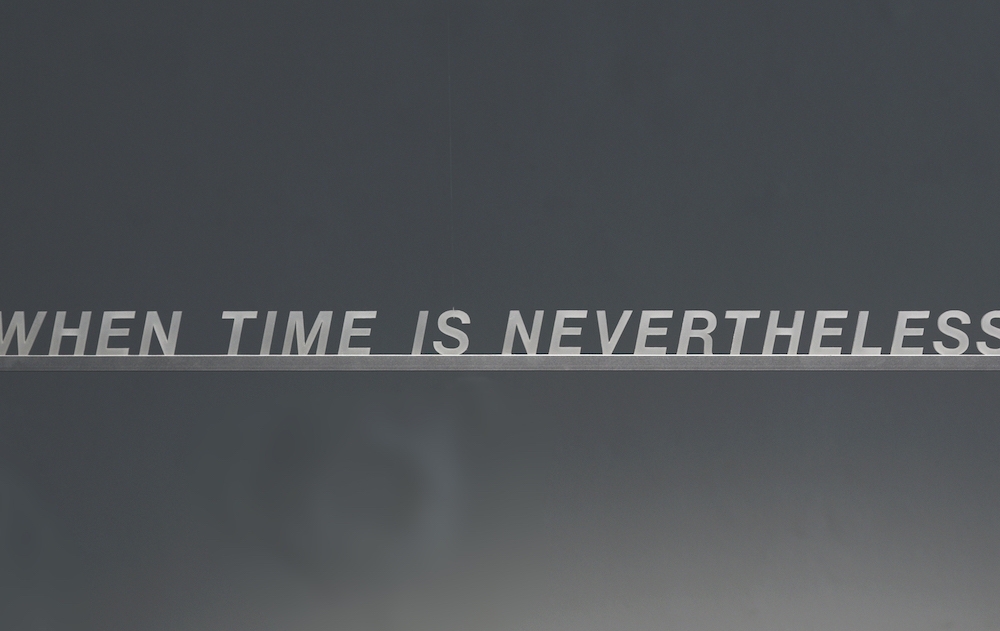Similar to the personal exhibition “The Shadow of Time” held at the Hobusepea gallery at the end of last year, the works of this exhibition – both sculptural and conceptual text-objects – are formed from Maurice Blanchot’s sentences, selected by the artist, but here focusing on the motif of “waiting” instead of the concepts of “self” and “time” in the previous exhibition.
Waiting, whose nature is based on both abundance and lack, is one of the primary ways of existing in time and relating to time. Whether it is an impatiently hopeful thirst for what lies ahead, or an anticipatory uncertainty and anxious ignorance of some vague inevitability, there is generally no escape from waiting. Dealing with it, to a greater or lesser extent, is absolutely necessary on practically a daily basis.
In Varrese’s works, the text (and language) acts as a particularly sensitive border between the real and the imaginary, which is why experiencing his works (or reading the texts) can be considered a liminal experience. All of the texts displayed in the exhibition have been selected by the artist from different Blanchot books and have been taken out of their original contexts. For Varres, the texts placed in the exhibition space and the ideas inspired by them are not simply thought exercises or games, even though at first glance they can be approached from this angle. On closer inspection, they are asking for something else, always something reasonable.
Tarvo Varres (b. 1970) is currently dealing with the themes of fragility and non-linear time in his works. Varres started his public exhibition activity in 1991 and has worked as a guest lecturer at the Estonian Academy of Arts and Pallas University of Applied Sciences. He has received the Young Photographer Award of the Estonian Film-makers Association (1992), the Annual Award for Visual and Applied Arts from the Cultural Endowment of Estonia as part of Group T (1996) and was a 2018 Köler Prize nominee. His works belong to the contemporary art collection of the Art Museum of Estonia.
The exhibition is supported by the Cultural Endowment of Estonia.




